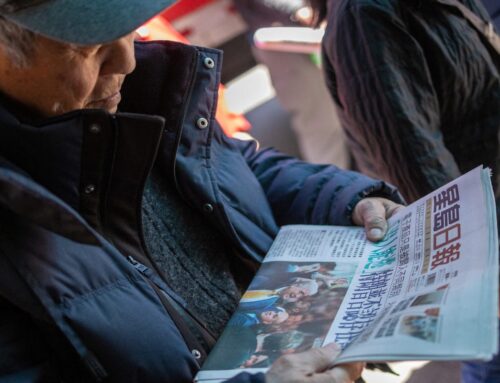‘Worst-case scenario’: when needed most, New Orleans bollards were missing in action
January 3, 2025
Like the rest of those living in New Orleans at the time, Aaron Miller – then the city’s homeland security director – was terrified after a gunman drove a truck into a crowd celebrating Bastille Day in the French coastal city of Nice in 2016, killing 86 people and wounding many more in a terrorist attack claimed by the Islamic State (IS).
Similar car attacks in Berlin, London, New York and Barcelona also put him on edge as he thought about the safety of his city.
“We just said … it’s just too risky right now” to not fortify New Orleans’ most famous thoroughfare, Bourbon Street, the globally renowned festive drag. “God forbid somebody does this [here].”
By the end of 2017, Miller had overseen the city’s acquisition of road-blocking, cylindrical columns known as bollards – along with other barriers – designed to prevent terrorists from driving into revelers descending on Bourbon Street for one of the city’s many celebrations.
The barriers were part of a broader $40m public safety package unveiled by Miller’s boss in those days, Mayor Mitch Landrieu, who left office in 2018 and more recently served as the co-chairperson of Kamala Harris’s presidential campaign.
Some of the most visible elements of that plan remained in place early on Wednesday when a former US army veteran driving a rented pickup truck – flying a pole-mounted IS flag in the back – drove around a police barricade at the foot of Bourbon Street and plowed into a crowd of New Year’s Day revelers, killing 14 and injuring more than 30 others before police shot him to death.
Among those elements were ubiquitous street surveillance cameras with bright flashing lights and strategically positioned license plate readers meant to inform authorities of motorists’ comings and goings should they become of interest to investigators.
Yet the bollards at 11 of 16 locations – including at the foot of Bourbon Street, where the attack began – were down for repairs on Wednesday, with officials saying they had become “unreliable and [had] been non-operational” ahead of New Orleans’ hosting duties for the National Football League’s Super Bowl on 9 February.
One factor they cited: beads thrown during the city’s renowned Carnival parades had clogged the barrier system.
Surveillance video from the attack showed the former military member drive over another type of roadblock on Bourbon Street – known as a wedge barrier and implemented as part of the 2017 safety plan – that had evidently been left in the down position. That wedge barrier was seen up again on Thursday.
And not present at all was a third kind of blockade deployed previously by New Orleans’ public safety officials: portable, L-shaped archer barriers that are typically erected three or four abreast across a roadway and on sidewalks to stop even speeding motorists by tilting back if struck and wedging under their vehicles.
The New Orleans police superintendent since November 2023, Anne Kirkpatrick, stunned television viewers on Thursday when she acknowledged to reporters that she was unaware her agency even had the archer barriers as part of their toolkit.
“Actually, we had them,” Kirkpatrick said when asked about the archers, which were put out Thursday as New Orleans’ Caesars Superdome prepared to host the football teams of Notre Dame and Georgia universities’ postponed Sugar Bowl showdown. “I didn’t know about them, but we have them.”

Miller, who moved on to other professional opportunities as New Orleans’ incumbent mayor LaToya Cantrell took over for a term-limited Landrieu, said the city was using alternate, more temporary “solutions” designed to stop a vehicle attack on Bourbon Street. He mentioned portable gates, parked dump trucks and a police cruiser with its flashers blocking the road at the foot of the famed street.
But the attacker simply drove around the front of the police cruiser, climbed the unimpeded sidewalk and hurtled up Bourbon Street, which was packed with people partying among the street’s bars, clubs, eateries and other establishments.
The carnage stopped only after the attacker’s pickup crashed into a construction lift three blocks away from the impotent patrol car, resulting in his being killed in a shootout with police.
Had the attacker been able to activate a control later found in his truck for two pipe bombs left in a pair of ice chests a couple of blocks up Bourbon Street, there is no telling how many more people could have been hurt or killed.
Miller, the deputy county manager of Arlington, Virginia, and an adjunct assistant professor at Tulane University’s school of public health and tropical medicine in New Orleans, made it a point to not criticize or blame anyone in the local government for the attack having taken place.
Earlier on Thursday, Louisiana’s lieutenant governor, Billy Nungesser, publicly upbraided New Orleans officials on the local CBS affiliate WWL Louisiana. “To think that someone in the city wasn’t on top of this is unthinkable,” Nungesser said, prompting Cantrell’s office to respond in part: “New Orleans … will not be distracted by outside commentary.”
University of Michigan professor and counter-terrorism expert Javed Ali told the BBC that he wondered whether the Bourbon Street attacker was going too fast to be stopped by bollards.
Separately, despite acquiring the multimillion-dollar public safety package, Bourbon Street has intermittently reeled from deadly violence, including mass shootings, though they have often been fights that spiral out of control – and occasionally ensnare bystanders – rather than deliberate, indiscriminate attacks.
Nonetheless, Miller said he regretted seeing that some of the protective investments New Orleans made in 2017 were missing in action when perhaps they were most needed. For one, a report commissioned by the city’s government determined the French Quarter was at risk of being targeted for terrorism and was a concern that municipal officials “must address”.
He – and multiple sources in local law enforcement – recalled simulating an attack years earlier that was eerily similar to the one attributed to Shamsud-Din Jabbar, 42, of Houston, Texas. That exercise involved a garbage truck being intentionally barreled into a crowd, Miller said.

Miller declined comment when asked if the city could have better maintained its missing bollards. He declined to comment on the wedge barrier left in the down position at the time of the attack – but then propped back up a day later, flanked by archer barriers on each adjacent sidewalk.
And he also declined to discuss Kirkpatrick’s comment about not having initially realized that her agency was in possession of those archer barriers as officials continued their work identifying Jabbar’s victims.
“This is one of the worst-case scenarios that we trained and exercised for,” Miller said. “These are the things that keep us up at night.”
Search
RECENT PRESS RELEASES
Related Post




